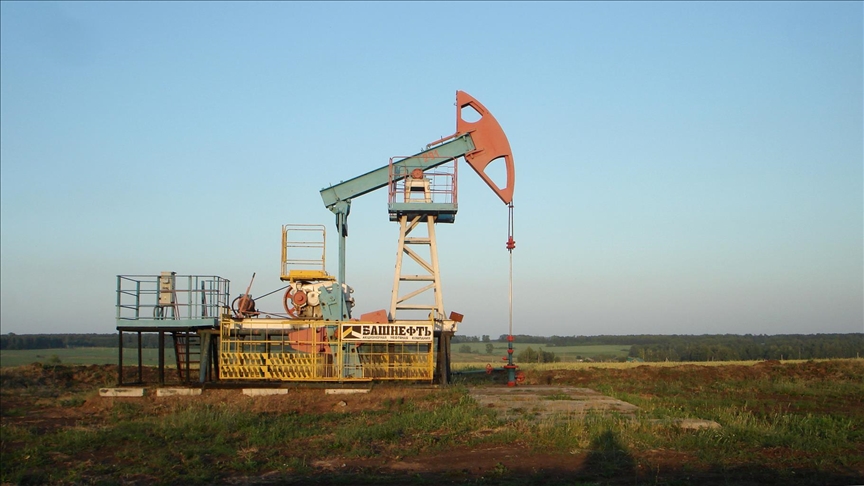ANKARA
EU countries are set to impose Sunday a ban on Russian seaborne oil products, along with a global price cap to exert more pressure on Moscow’s revenue stream, but industry experts fear the move could be counterproductive and have a profound impact on European energy markets compared to a similar ban on Russian crude oil in December, as the bloc imports almost half of its diesel from Russia.
According to the sanctions, scheduled as part of the sixth sanctions package agreed last June, EU and G7 countries will stop buying Russian refined products such as diesel, gas oil, and fuel oil.
A price cap of $100 per barrel on premium Russian oil products such as diesel and a $45 per barrel on discounted products like fuel oil will also come into effect the same day.
Western insurance and shipping companies will be prohibited from insuring or carrying cargoes of Russian oil products unless they were bought at or below the caps.
Ursula von der Leyen, head of the European Commission, said the price caps aim to cut Russia’s revenue “while ensuring stable global energy markets.”
Western governments will also review the $60 per barrel cap on Russian crude oil intended to impede the international circulation of Russian crude oil sales. The sanctions have so far failed to have the desired impact as the market price for Russian oil has remained significantly below this price ceiling.
In retaliation, Russia imposed a ban on oil supplies to countries and companies that comply with the price caps.
The decision which came into effect on Feb. 1 prohibits the supply of Russian crude oil and oil products “at all stages” if contracts directly or indirectly abide by the price cap. The ban will remain in place for five months.
Oil price spikes can cast shadow on Western sanctions
“The price cap seems to be working, but it’s working for the wrong reasons,” Julien Mathonniere, an oil markets economist at Energy Intelligence Group, told Anadolu.
He said deals for Russian crude are effectively being done under the fixed price of $60 per barrel, however, “not due to buyers adhering to the cap itself” but “because the free-floating price of Russian Urals is constrained by sanctions and the resulting market dynamics.”
Carole Nakhle, CEO of research and training company Crystol Energy, said the ban and cap aimed to curtail Russian revenues could be considered successful only if they end up with intended consequences on Russia’s economic growth.
She pointed to a recent forecast released by the IMF, which said the Russian economy is projected to grow 0.3% in 2023 despite a raft of Western sanctions. This was a massive jump from the -2.3% contraction estimated in October.
“However, there is one more dimension to these measures,” Nakhle warned. “Avoid oil price spikes. If you do, they (sanctions) will be successful.”
Profund impact and EU’s cautious stockpiling
Mathonniere believes that the forthcoming ban on Russian oil products and price cap will have a profound impact, but it may not be immediate due to product stockpiling.
“Data is showing product inventories build-ups, not only in Europe but now in the US too. This market has gotten ahead of itself and accumulated so much product inventory so fast that the ICE low-sulfur gasoil futures are falling,” he said.
He argued that prices would normally go up, and warned that over the long term, Europe needs to find just over 1 million barrels per day (bpd) of alternative product supplies, nearly half of which is diesel.
Nakhle, however, was cautious to predict possible impacts of the ban, saying: “It is too early to tell as usually the impact, if any, takes time to become more visible. There is a good chance that the impact will be limited given the nature of oil trade – be it crude or products.”
‘Europe may face a diesel deficit’
Nakhle confirmed that diesel would be impacted more as it is more fragile in supply terms. “Without diesel, some economies cannot simply function,” he said.
According to Mathonniere, about 500,000 bpd of Europe’s products imports from Russia consisted of ultra-low-sulfur diesel (ULSD), which is considered the region’s “Achilles’ heel” in terms of product supply.
Russia accounted for almost half of EU-27 diesel imports last year or approximately 10% of the bloc’s overall diesel consumption, he noted.
“Europe may face a diesel deficit,” he said, warning about the prospect of higher-for-longer prices and economic pain for European motorists, businesses, and agriculture.
“It also threatens to push the entire oil complex higher. There is speculation the EU may exempt some diesel imports from Russia, as it did with crude. And there is also talk that some traders may try to re-export Russian diesel from non-EU countries to Europe,” he added.
If Russia curtails its supply in the face of the bans, possible oil price spikes “depend on whether that supply disappears from the global market or simply redirected to other buyers,” Nakhle said.
The lack of diesel supply in Europe, according to Mathonniere, will lead to potential price increases.
“We forecast a $10-$20 move higher, which is when there will be a larger spotlight on OPEC+. We see $90-$100 return in the next 3-6 months, but a much lower ceiling compared to 2022,” he said.
Mathonniere went on to predict that OPEC+ may try to dampen prices and tame volatility, “especially if sizeable amounts of Russian oil are removed from the market in a sustained way.”

